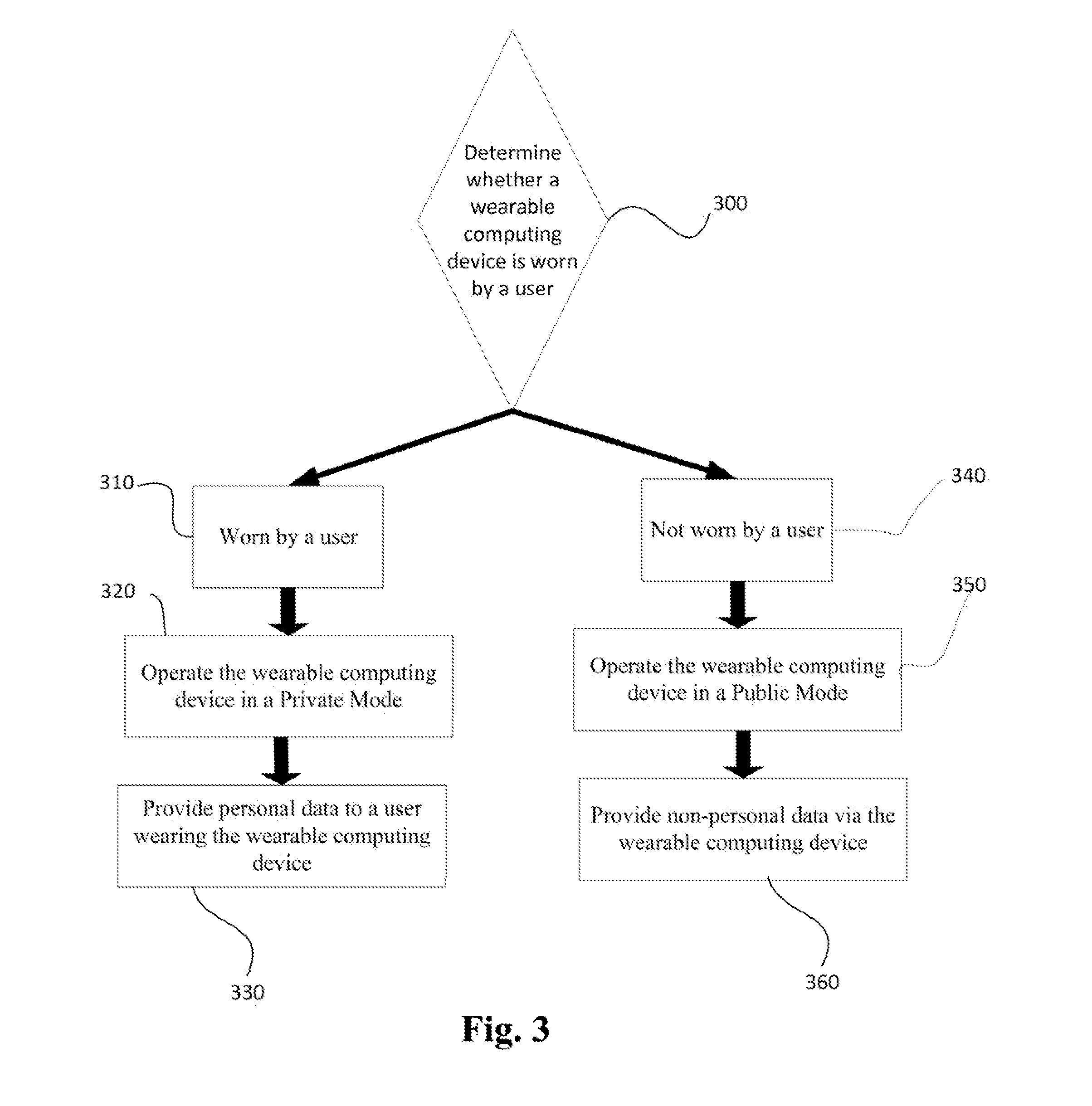Wearable Device Multi-mode System
a multi-mode system and wearable technology, applied in the field of wearable devices multi-mode systems, can solve the problems of limiting the ability of wearable devices, limiting the number of buttons and/or restricted surface area that users can interact, and user may be less motivated to use wearable devices
- Summary
- Abstract
- Description
- Claims
- Application Information
AI Technical Summary
Benefits of technology
Problems solved by technology
Method used
Image
Examples
Embodiment Construction
[0014]Enabling a wearable computing device to automatically modify a use mode can improve device battery life, allow secured data distribution, allow personalized data distribution, and have additional benefits as disclosed herein. According to implementations disclosed herein, whether the device is being worn by a user, or likely to be worn by a user may be based on a secured clasp, buckle, fastener or based on measuring a capacitance, capacitance, galvanic skin response, or any other applicable technique. The arrangement may operate the wearable computing device in a private mode if the device is determined to likely be worn by a user. As disclosed herein, the private mode operation may include configurations and specific data disclosure such as providing a user with email messages that are associated with a user email account. It may be beneficial to operate a wearable computing device in a different mode while the device is worn (i.e. private mode) than while the device is not w...
PUM
 Login to View More
Login to View More Abstract
Description
Claims
Application Information
 Login to View More
Login to View More - R&D
- Intellectual Property
- Life Sciences
- Materials
- Tech Scout
- Unparalleled Data Quality
- Higher Quality Content
- 60% Fewer Hallucinations
Browse by: Latest US Patents, China's latest patents, Technical Efficacy Thesaurus, Application Domain, Technology Topic, Popular Technical Reports.
© 2025 PatSnap. All rights reserved.Legal|Privacy policy|Modern Slavery Act Transparency Statement|Sitemap|About US| Contact US: help@patsnap.com



